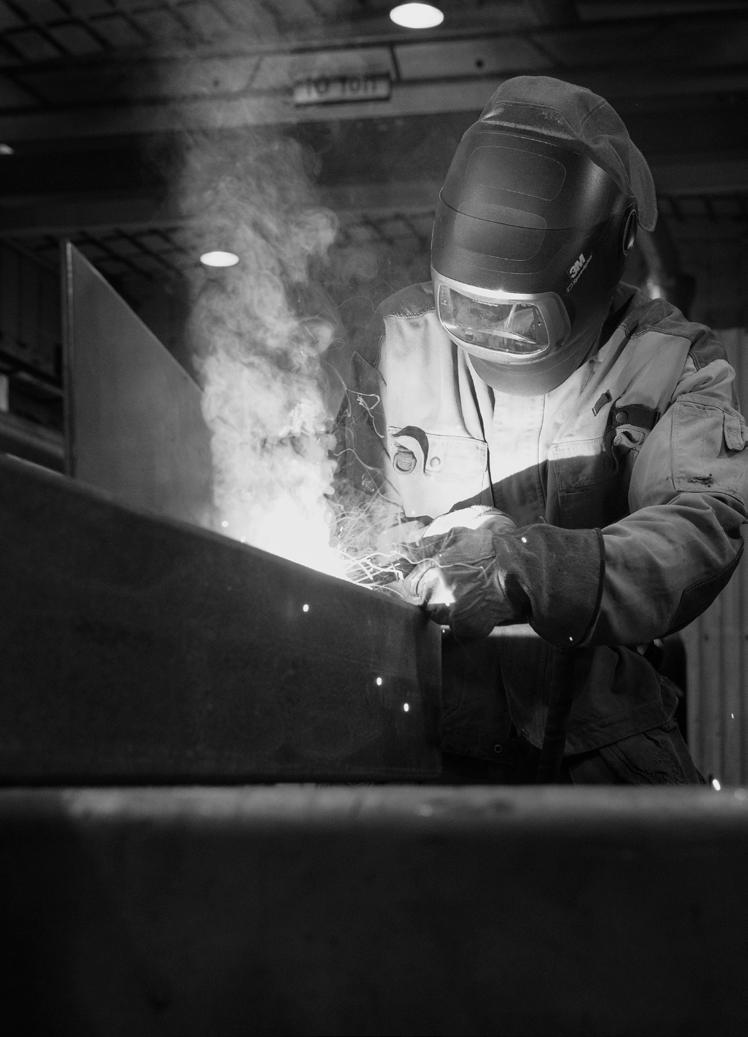

THE PRACTICAL GUIDE TO WELDING FUME CONTROL
There is a critical need to give workplaces clear and practical advice that can help to keep welding fume exposure to an acceptable level.
This guide is based on a simple premise - the health risk posed by welding fume is serious, however, keeping yourself safe can be straightforward.
Consequently, in this guide, we outline the dangers of welding fume and then give you actionable and practical guidance based specifically on the welding industry.

Welding Fume Is Serious. Action Is Required.
The important point to understand is that while the risk posed by welding fume is serious, keeping yourself safe can be straightforward.
The 2017 IARC reclassification of welding fume as ‘carcinogenic to humans’ simply confirmed what was already known – welding fume is extremely bad for health and workplaces must protect their workers. Excessive exposure to welding fume can cause multiple types of cancer, including lung, larynx, and urinary tract.
‘Welders present, on average, a 43% increased risk of lung cancer when compared with those who have never welded or been exposed to welding fume’1. ‘This increased risk of lung cancer is regardless of the type of steel welded, the welding process and independent of exposure to smoking’1. Precedent for workers’ compensation based on a link between welding fume and cancer was established in the Australian courts back in 2014, opening the door for future compensation claims.
Aside from cancer, welding fume can also cause serious long-term health effects like lung function
Welding fume is serious, action is required.
abnormalities, including bronchial asthma, chronic obstructive pulmonary disease (COPD), pneumoconiosis and other pulmonary fibrosis, as well as stomach ulcers, kidney damage and nervous system damage.
Recognising welding fume as carcinogenic and the other associated health risks should encourage all employers of welders to review their risk assessments and revise their control measures.
Welding fume is serious, action is required.

A Practical Guide to Fume Control.
Applying a practical approach to the ‘Hierarchy of Control’.
The hierarchy of control is a step-by-step system for controlling risks in a workplace. This framework is used across a range of industries and while it applies to welding, it was not built specifically for the welding industry.
So, while it is important to understand the overall framework, a control framework built specifically for welding fume may be valuable to those seeking to understand how to protect their welders or themselves.
To give you a more simplified and practical approach to controlling welding fume, we offer the ‘Practical Guide to Fume Control’ comprising of three steps:
1. Mitigation of Risk,
2. Product Controls, and
3. Administrative Controls
Mitigation of Risk Product Controls Administrative Controls
While care must be taken to mitigate risks through elimination (eg. removing surface coatings) and substitution (eg. using less hazardous materials), if welding is to be done, welding fume will be present.
As a result, product controls will be essential.
Product controls are available in two main forms:
1. Local Exhaust Ventilation (LEV)
2. Personal Protective Equipment (PPE)
A combination of product controls is often the best approach.
Procedural controls (eg. minimise work conducted in restricted spaces, training, care and maintenance) should be introduced to support PPE and LEV controls.
Mitigation of Risk
When it comes to welding fume, all efforts should be made to mitigate the risks where possible.
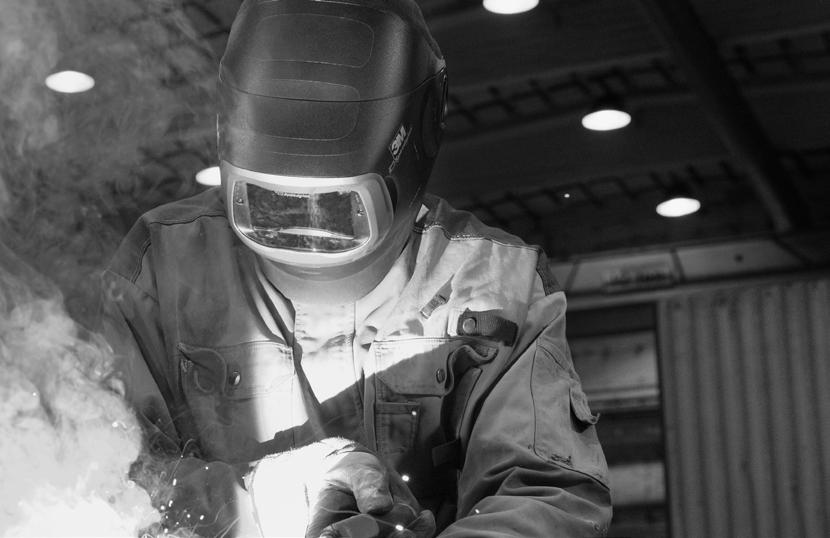
Examples include:
• Removing surface coatings on materials.
• Changing to less hazardous materials (both consumables and base materials).
• Using a welding technique that produces less fume (different application or working with lower amps)
• Where possible, workers should position themselves to ensure they keep their heads away from the plume and also ensure any ventilation airflow moves the welding fume away from the breathing zone, not through it.
While the highest levels of controls (elimination and substitution) within the ‘hierarchy of control’ give the highest level of protection and reliability in many industries, they are often not practicable or possible when it comes to the welding industry. Substituting materials can result in quality issues and using lower amps is often not an option.
Even when you can mitigate risk, if there is welding to be done, welding fume will be present. Welding fume is inherent in the process of welding. As a result, we see that in the welding industry, the higher levels of control can often only mitigate the risks associated with welding fume, making the lower levels of control essential.
Simple Takeaway
Higher levels of control can often only mitigate the risks associated with welding fume. Product and administrative controls are essential.
Product Controls
Product controls are available in two main forms:
1. Local Exhaust Ventilation (LEV)
2. Personal Protective Equipment (PPE)
Local Exhaust Ventilation (LEV)
LEV can assist in reducing exposure to welding fume and other airborne contaminants, not only for the welder, but also for those who work near welding operations. This is the key difference between LEV and Personal Protective Equipment (PPE). PPE can only protect the welder, while correctly located LEV can protect the welder and stop the spread of fume throughout the workplace. It is recommended that respiratory PPE is always worn in combination with LEV.
There are three main LEV options within the welding industry:

1) Fixed Installations
A key advantage of fixed installations is that they can deal with a large quantity of welding fume, making them ideal for heavy fume environments. A limitation of these systems is that they do not follow the welder as they move. Positioning is critical. If the welder moves away from the capture point, these systems are ineffective. They won’t offer protection to the welder or control the spread of fume throughout the workplace.
If the welder is too close to the capture point, the extraction flow can affect the shielding gas, leading to porosity and poor weld quality. These systems can be a good control for heavy fume environments, where the welder remains positioned correctly, relative to the capture point.
2) Portable Systems
Portable systems can be a more economical option when compared to fixed installations and in many situations can offer more flexibility as requirements change over time. They can be carried or rolled around the workplace and positioned where required and are ideal for situations where the welder moves around the workspace. However, like fixed installations, once they are positioned, they do not follow the welder as they move.
Portable systems can be a good control for most welding applications, where the welder does not move away from the extraction point. However, ensure you consult an LEV expert, as different welding applications require different configurations. Portable LEV is not one-size-fits-all.
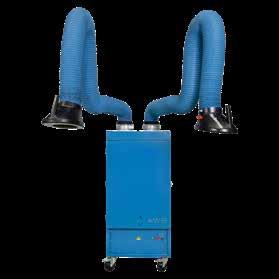
3) On-Gun Fume Extraction
On-Gun Fume Extraction is the only product control solution that removes welding fume from the environment and follows the welder as they move (unlike fixed and portable solutions), making it an extremely practical welding fume control solution.

Recent technological advancements have also meant that on-gun torches can now be the same size and weight as normal welding guns and deliver high capture rates (up to 98%), while leaving the shielding gas completely unaffected.
A limitation of on-gun fume extraction is that it is not available for all welding applications (eg. MMA).

For more information regarding on-gun fume extraction, please contact AWS.
Advantages
Fixed Installations
Portable LEV
On-Gun Extraction
• Ideal for heavy fume environments
• Lower cost vs fixed installations
• Mobility and flexibility
• Follows the welder
• High capture rates (up to 98%)
Limitations
• Does not follow the welder
• Positioning is critical (protection/porosity)
• Does not follow the welder
• Positioning is critical (protection/porosity)
• Not available for MMA (Stick) welding
• Parameters must be set correctly
Important Note – Opening a roller door is not enough!
Natural Dilution Ventilation
It should be noted that wind, a cross-breeze, or opening a roller door, should only be used for general comfort, not as an engineering control measure for atmospheric contaminants and fumes.
While this can help disperse welding fume in combination with other controls, it must never be used as a control by itself.
Forced Dilution Ventilation
Occurs when contaminants released into the workshop mix with air flowing through the room via forced dilution ventilation systems. Forced dilution is also not an effective method to control welding fume exposure as large volumes of air may be required and it is extremely difficult to control individual exposure near the contaminant source where dilution has not yet taken place.
Employers must also ensure that forced dilution systems, when relied upon, are not contaminating other areas.
Personal Protective Equipment (PPE)
In relation to the hierarchy of controls, PPE is often referred to as the last resort. When it comes to welding, suitable PPE must always be worn. PPE for respiratory protection from welding fume is commonly available in two main forms:
1) Welding Helmets with integrated respiratory protection
2) Half mask respirators.
1) Welding Helmets with Integrated Respiratory Protection
‘Welding helmets with integrated powered air purifying respirators (PAPR) are the most widely used form of respiratory protection amongst welders in Australia and New Zealand’2 and are mandatory within many businesses.
They have a Required Minimum Protection Factor (RMPF) of 50, meaning that they supply breathing air a minimum 50 times cleaner than the welder would otherwise be breathing unprotected and can also protect the welders’ eyes and face from radiation and high velocity particles. Integrated hard hats (safety helmets) and earmuffs are also available with these systems to give welders five levels of protection (eye, face, respiratory, head, hearing).
With a flip-up welding helmet with powered air respiratory protection, welders can have completely clear and uninhibited views of their workpiece and surroundings while maintaining their desired level of respiratory protection with no breathing resistance.
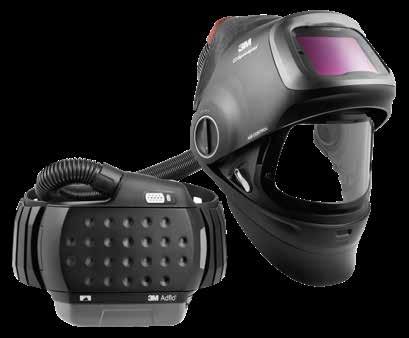
The powered air respirator goes where the welder goes, allowing unrestricted movement around the workplace with clear vision, comfort, and uninterrupted eye, face, and respiratory protection.
A recent study conducted within a large manufacturing company with over 1,500 employees, including 600 certified welders, found that ‘foreign body eye injuries decreased over 70% year-on-year in areas that implemented the PAPRs with integrated flip-up auto darkening welding helmets. Worker compensation claims decreased markedly while employee morale increased substantially’3.
PAPRs can provide protection to welders using the most common materials (aluminium, steel, stainless steel, galvanised steel etc.) and applications (MMA, TIG, GMAW, FCAW, SAW) where there is an environment with good ventilation and/or extraction.
Image: An example of a flip-up auto-darkening welding helmet with an integrated powered air purifying respirator.2) Half mask respirators
Disposable or reusable P2 rated half mask respirators can be worn underneath a welding helmet to provide a RMPF of 10. The welder must be fit tested (annually is recommended) and clean shaven (if relevant) to ensure an effective negative pressure seal. Never use a half mask that is flammable.
When compared to disposable and reusable half-face mask respiratory protection, PAPRs provide superior respiratory protection and comfort and do not require fit testing or a complete clean shaven condition.
Comfort Considerations A steady flow of fresh air helps to cool the welder down in hot conditions, reducing sweat and heat buildup.
Cost Considerations A PAPR draws air into the system from behind the welder away from the greatest concentration of welding fume.
For this reason, the filters on a PAPR will typically need to be changed far less frequently than a disposable respirator or reusable respiratory filters.
Long term, a PAPR can be the more economical solution.
The negative pressure seal can result in an uncomfortable fit in welding conditions (sweat, heat). Can interfere with the welding helmet.
While half mask respirators have a lower upfront cost, they can be the more expensive long-term option.

Worn on the welder’s face in closer proximity to the plume, filters can become loaded extremely quickly in certain welding environments.
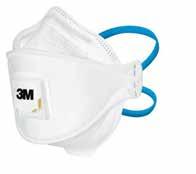 Image: An example of a disposable half mask respirator (left) and a reusable half mask respirator with replaceable filters (right).
Figure 2.2 - Quick Reference Welding Respiratory PPE Comparison Chart
Welding Helmets with Integrated Powered Air Respiratory Protection
Image: An example of a disposable half mask respirator (left) and a reusable half mask respirator with replaceable filters (right).
Figure 2.2 - Quick Reference Welding Respiratory PPE Comparison Chart
Welding Helmets with Integrated Powered Air Respiratory Protection
Scientific Research on the Effectiveness of Product Controls
In 2022, an Australian independent scientific study7 was conducted to compare the effectiveness of welding fume product controls. The methods analysed were On-Gun Fume Extraction, Hooded Capture Local Exhaust Ventilation (LEV), and a Welding Helmet with a Powered Air Purifying Respirator (PAPR). The study “Welding fume; a comparison study of industry used control methods” was published in the Safety Journal in 2023.
The key findings of the study were as follows:
#1 POWERED AIR PURIFYING RESPIRATOR (PAPR)
#1 Powered Air Purifying Respirator (PAPR)
The Welding Helmet with an Integrated PAPR was by far the most effective control measure in protecting the welder from welding fume exposure when compared to On-Gun Fume Extraction and Hooded Capture Local Exhaust Ventilation (LEV). The Welding Helmet with PAPR reduced exposure to welding fume - a known carcinogen - by at least 99.96%^.
^Please be aware that it is an employer’s legal responsibility to reduce welding fume exposure to as low as reasonably practicable for all persons, not just the welder. These results are only applicable to situations where there are no other people sharing the environment with the welder/s. The information within this document only outlines the key results from the study. For more detailed information on the results, including limitations, please download the Welding Fume Product Controls White Paper at www.apexweldingsafety.com.au.
ON GUN
33% MORE EFFECTIVE VS.
On-Gun Fume Extraction 33% more effective than Hooded Capture LEV Extraction
On-Gun Fume Extraction was 33% more effective than Hooded Capture Local Exhaust Ventilation (LEV) in extracting welding fume from the environment. On-Gun Fume Extraction was able to extract up to 97% of the welding fume with an average of 90% across all tests^.
^Please note that On-Gun Fume Extraction is not suitable for all welding applications (eg. MMA stick welding) and certain variables can impact effectiveness (eg. design of the system, weld position, and environmental factors). The information within this document only outlines the key results from the study. For more detailed information on the results, including limitations, please download the Welding Fume Product Controls White Paper at www.apexweldingsafety.com.au.
IMPORTANT
The findings are unique to the study parameters and conditions. All guidance is provided to give an example of how to control welding fume and is provided as a basic guideline only. It should not be used as the only means of selecting a respirator or LEV control method. It’s always recommended to have a welding fume product control expert visit your premises as onsite variables can impact product control effectiveness (eg. weld position, and environmental factors).
Powered air respirators must never be used in atmospheres Immediately Dangerous to Life or Health (IDLH). Always consult your Safety Engineer or Occupational Hygienist. Air monitoring should take place if you are unsure about the level of welding fume exposure to workers.
Brands and product names have been omitted from the results of this study to keep the information focused solely on the different forms of product controls as opposed to pushing specific brands or products. However, it’s important to note that the results are only applicable to the brands and products used in the study – these can be made available upon request.
The key results and the guidance within this document do not address confined spaces. Confined spaces should be avoided where possible. All of today’s current welding fume product controls have their limitations in a confined space. There should be a suitably trained and knowledgeable person doing the assessment and design of a safe system for any confined space entry. Consultation with a welding fume product control expert should always be carried out to understand the limitations of each product control within a confined space.
Administrative Controls
Procedural controls must be introduced to support product-based controls.
Training and product maintenance
As an employer, once you have selected the appropriate PPE, ‘you must provide the worker with information, training and instruction in the proper use and wearing of PPE’4. Proper guidance should be given on the storage of equipment and care and maintenance guidelines should be clear and followed.
For LEV systems, you must implement a maintenance and test regime to ensure proper operation.
Ensure you select suppliers who can not only provide equipment, but also administer the required training and support. Also, ensure all required spare parts are readily available and stocked.
Working area considerations
• Minimise work conducted in confined spaces.
• Introduce a dedicated area for welding.
• Control access to the working area.
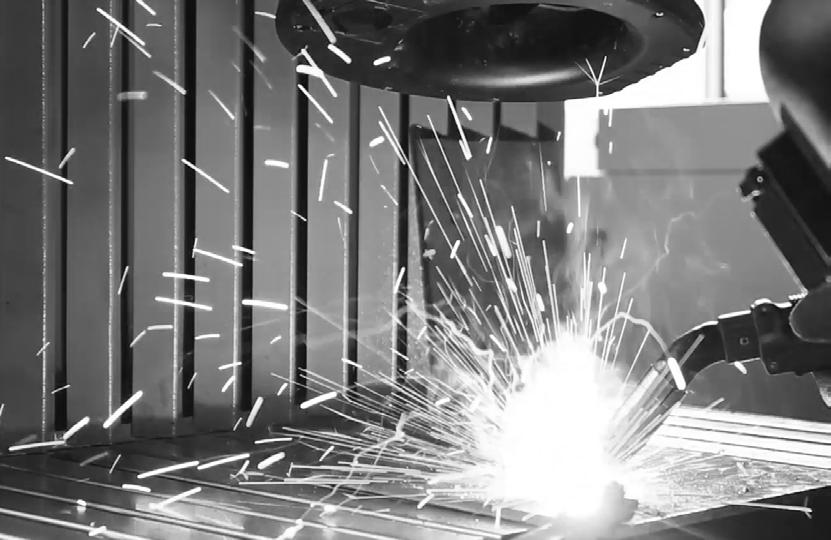
As an employer, once you have selected the appropriate PPE, you must provide the worker with information, training and instruction in the proper use and wearing of PPE.
Who is responsible?
A ‘Person Conducting a Business or Undertaking’ (employer) must ensure that no person at the workplace is exposed to welding fume in an airborne concentration that exceeds the exposure standards. This includes total welding fume concentrations as well as individual fume components.
However, exposure standards should not be considered as representing an acceptable level of exposure to workers. Exposure standards simply establish a legal maximum upper limit. Therefore, additionally, employers must also reduce exposure to welding fume to as low as reasonably practicable to protect workers and others in the workplace.
The information within this practical guide to welding fume control can be used to help businesses fulfill their legal responsibility as it relates to:
• Not exceeding welding fume exposure standards.
• Reducing welding fume exposure to as low as reasonably practicable.
If employers are unsure whether the welding fume exposure at their workplace exceeds the relevant exposure standard, OH&S regulations require that they must ensure air monitoring is carried out.

Under both the Australian Work, Health and Safety Laws and the New Zealand Health and Safety at Work Regulations, the employer is financially responsible for providing PPE to workers and must not charge anyone for using PPE.
When selecting suitable PPE, the employer, where reasonable, should consult with the welders. A welder’s knowledge, experience and personal preferences improve the overall decision-making process. As someone who is directly affected by welding hazards, a welder is entitled to take part in the consultation process and selection of suitable PPE. Personal preferences are the key to user acceptance – so look for gear that welders feel comfortable wearing.
As a welder, you should aim to educate yourself on the risks, understand the appropriate PPE available and look to involve yourself in the consultation process and ultimate selection of suitable product controls.
PRACTICAL GUIDANCE
Pulling it all together
Based on the conclusions of the 2022 welding fume product control study7, the following product control guidance is offered to reduce welding fume exposure to as low as reasonably practicable when welding using the most common materials (aluminium, steel, stainless steel, galvanised steel etc.) in environments with good ventilation.
This guidance assumes that all efforts to mitigate risk associated with welding fume through elimination, substitution, and isolation controls have been carried out.
Protecting only the welder from welding fume^:
Introduce Welding Helmets with integrated Powered Air Purifying Respirators (PAPR).
Ensure staff are trained in the proper use and maintenance of the PAPR. Many suppliers offer in-person and online training programs for free.
Remove surface coatings and look to mitigate risk by using a welding technique that produces less fume or introduce less hazardous materials where possible. Welders should position themselves to ensure they keep their heads away from the plume where possible and take advantage of any ventilation available.
^Please be aware that it is an employer’s legal responsibility to reduce welding fume exposure to as low as reasonably practicable for all persons, not just the welder. This guidance is only applicable to situations where there are no other people sharing the environment with the welder/s.
Protecting the welder and surrounding workers from welding fume:
Introduce a dedicated area for welding away from other workers and restrict access to this area where possible.
WELDING FUME PRODUCT CONTROL SELECTOR
Introduce Local Exhaust Ventilation in combination with a Welding Helmet with an integrated Powered Air Purifying Respirator to protect the welder and control the spread of welding fume throughout the environment. If suitable for the application, on-gun fume extraction is the most effective and practical engineering LEV welding fume control*.
Have staff trained in the proper use and maintenance of the PAPR and LEV system. Some suppliers offer in-person and online training programs for free.
Remove surface coatings and look to mitigate risk by using a welding technique that produces less fume or introduce less hazardous materials where possible.
to know which specific products can be introduced to control welding fume at your workplace – please try the Welding Fume Product Control Selector using the QR code or website link below.

Welders should position themselves to ensure they keep their heads away from the plume (if applicable) where possible and take advantage of any ventilation available.
The solutions generated in this selector are based on the results of the Australian independent scientific study7 that was conducted in 2022 to compare the effectiveness of welding fume product controls.
Scan to use the Welding Fume Product Control Selector or visit www.weldingfume.com.au
Exposure Standards are just the beginning
The exposure standards in Australia and New Zealand ‘do not identify a dividing line between a healthy or unhealthy working environment’5
Take for example, a welder operating within the Workplace Exposure Standard (WES) for ‘welding fume not otherwise classified’ (5 mg/m3, TWA). Even if the welder is operating within the WES, an unprotected welder could inhale up to 11 grams of a carcinogenic substance (welding fume) every year*.
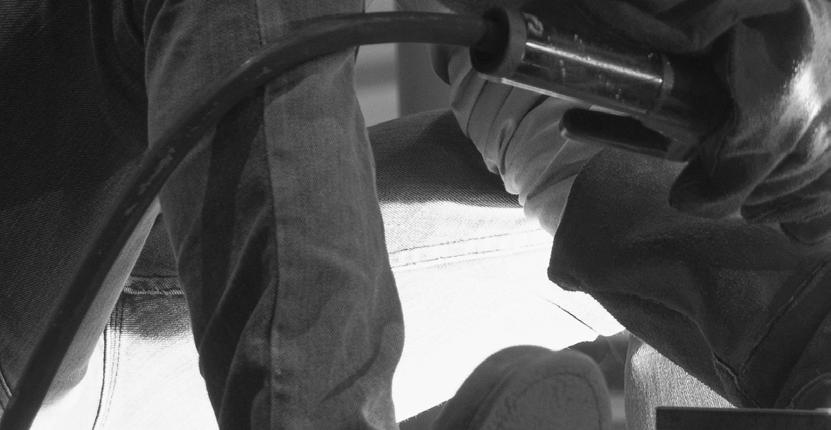
Aside from the WES for ‘welding fume not otherwise classified’, workplaces must also ensure no other Workplace Exposure Standards are exceeded.
Below we list the most common chemicals workers may be exposed to when welding, the source of these chemicals in the welding fume, respective health effects, and the current WES released by Safe Work Australia4,6.
Aluminium Aluminium component of some alloys, e.g., nickel chromium, copper, steel, magnesium, brass and filler materials.
Beryllium Hardening agent found in copper, magnesium, aluminium alloys and electrical contacts.
Cadmium Stainless steel containing cadmium or plated materials, zinc alloy.
Chromium
Most stainless steel and high-alloy materials, welding rods. Also used as plating material.
"Metal Fume Fever." A carcinogen. Other chronic effects include damage to the respiratory tract.
Irritation of respiratory system, sore and dry throat, chest pain and breathing difficulty. Chronic effects include kidney damage and emphysema. Suspected carcinogen.
Increased risk of lung cancer. Some individuals may develop skin irritation. Some forms are carcinogens (hexavalent chromium).
0.5 or 0.05
(Depending on chemical form)
Copper
Iron Oxides
Alloys such as nickel-copper, brass, bronze. Also some welding rods.
The major contaminant in all iron or steel welding processes.
Acute effects include irritation of the eyes, nose and throat, nausea and "Metal Fume Fever".
Siderosis - a benign form of lung disease cause by particles deposited in the lungs. Acute symptoms include irritation of the nose and lungs. Tends to clear up when exposure stops.
0.2
5
Lead
Solder, brass and bronze alloys, primer/coating on steels.
Chronic effects to nervous system, kidneys, digestive system and mental capacity. Can cause lead poisoning. Ototoxic and therefore risk of hearing loss.
0.05
Manganese
Most welding processes, especially high tensile steels.
"Metal Fume Fever." Chronic effects may include central nervous system problems. Ototoxic and therefore risk of hearing loss.
Zinc Oxides
Galvanized and painted metal. Metal Fume Fever. 5
Are you waiting for the law to change?
Without effective protection, welders are exposed to a carcinogenic substance. Even within the current Workplace Exposure Standards (WES) for welding fume in Australia and New Zealand, unprotected welders are notionally “allowed” to breathe up to 11 grams of a known carcinogen every year.
However, by law, it is the employer’s responsibility to reduce welding fume exposure to as low as reasonably practicable. The results of this study give clear and practical guidance on effective engineering and PPE control methods to reduce welding fume exposure.
On-gun fume extraction, the most effective engineering control measured in the study7, had an average capture rate of 90% across all tests. The law in Australia and New Zealand clearly states that if there is any remaining risk after higher controls, such as engineering controls, have been implemented, it must be minimised with suitable personal protective equipment (PPE).
Unlike many industries, welders have PPE specifically designed for their occupation to protect them from welding fume and other welding hazards – a welding helmet with a powered air purifying respirator. Based on the results of the study7, a PAPR correctly worn and maintained, will ensure that the welder is well below all relevant Workplace Exposure Standards for most common welding applications^, and can reduce welding fume exposure by a factor of at least 2,600 corresponding to a minimum 99.96% reduction.
Therefore, where an employer has already implemented engineering controls (On-Gun fume extraction or Hooded Capture LEV), a welding helmet with PAPR is an extremely effective method to minimise the remaining risk for the welder.
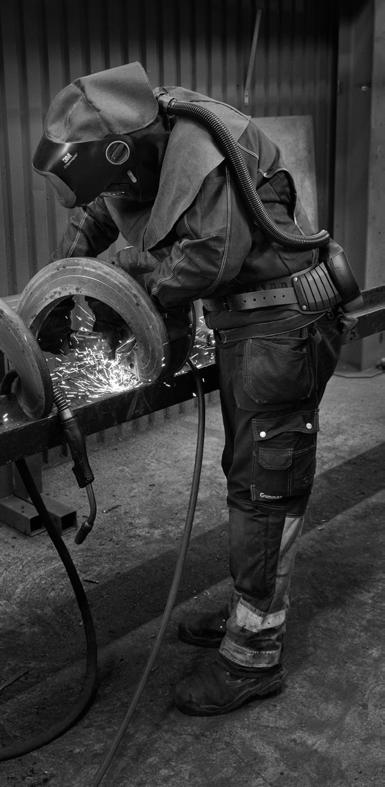
If there is any remaining risk after higher controls have been implemented, such as engineering controls, it must be minimised with suitable Personal Protective Equipment (PPE).
Where to from here?
Australian and New Zealand companies are now completely changing their stance on welding fume and welders’ PPE.
The 2017 reclassification of welding fume as carcinogenic prompted many to rethink and challenge what was historically considered ‘normal’.
The 2019 statistical analysis concluding that welders have up to a ‘43% increased risk of lung cancer’1 regardless of the type of steel welded, the welding process or time-period is of serious public health relevance.
Now, the 2022 study on welding fume product control effectiveness gives workplaces actionable guidance on how to protect their workers based on scientific data7
Being aware of information like this should act as the trigger at your workplace to introduce effective welding fume controls to give exposed workers the protection they deserve.
For guidance on selecting an effective product control approach for your workplace, please use the Welding Fume Product Control Selector below or get in touch with AWS.
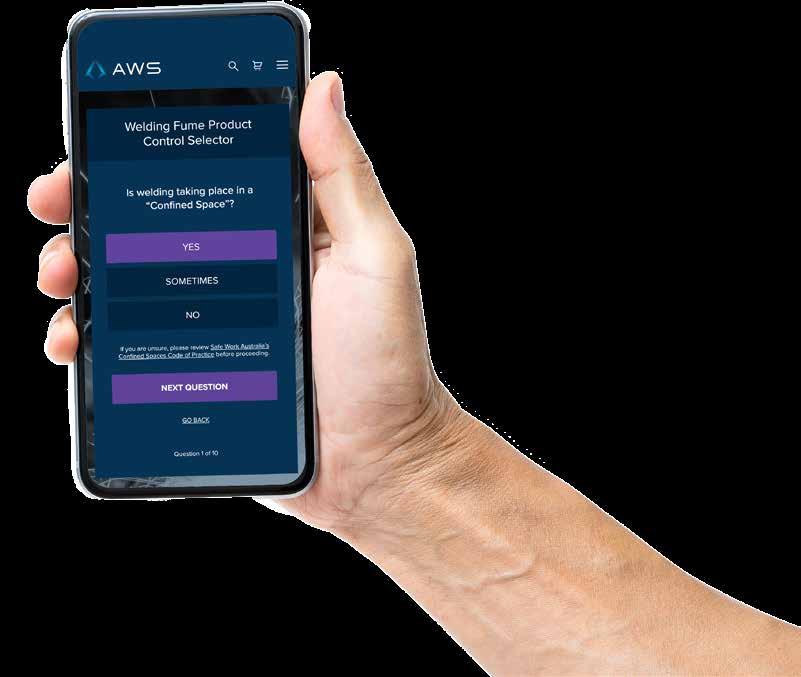
White Paper
The Effectiveness of Welding Fume
Product Controls - A Scientific Study:
There are countless studies that conclude that welding fume is bad for health, yet there seem to be very few that can give us practical guidance on how to effectively control welding fume exposure.


Studies have done an effective job in defining the problem; however, few have been able to identify and compare the relative effectiveness of available product control solutions. Until now.
www.apexweldingsafety.com.au
Key Fact Document
The Effectiveness of Welding Fume
Product Controls - A Scientific Study:
Don’t have time to read the whole white paper above?
The Key Fact Document presents the main results from the scientific study in an ’infographic-style’ brochure and offers practical guidance with clear next steps based on scientific data.
www.apexweldingsafety.com.au
About AWS
AWS was established in 1994 and has played a key role in the welding industry ever since.
As an advocate for welders’ safety in Australia and New Zealand, AWS has published numerous Welding Safety White Papers, Welding Industry Reports, and Welding Fume Control Frameworks.
As a company that specialises in welding safety equipment, it is our goal to raise awareness on the important issues that welders face.
For more information on welding fume monitoring, welding PPE, or welding fume extraction options, please contact AWS.

IMPORTANT
This publication contains work health and safety information and is provided as guidance, it should not be relied upon as legal compliance. It includes obligations under legislation that health and safety regulators administer. To ensure you comply with your legal obligations you must refer to the appropriate legislation. This publication does not represent a comprehensive statement of the law as it applies to particular problems or to individuals or as a substitute for legal advice. You should seek independent legal advice if you need assistance on the application of the law to your situation.
youtube.com/awsspeedglas
All guidance is provided to give an example of how to control welding fume and is provided as a basic guideline only. It should not be used as the only means of selecting a respirator or control method. It’s always recommended to have a welding fume product control expert visit your premises as onsite variables can impact product control effectiveness (eg. weld position, and environmental factors).
Powered and supplied air respirators must never be used in atmospheres Immediately Dangerous to Life or Health (IDLH). Always consult your Safety Engineer or Occupational Hygienist. Air monitoring should take place if you are unsure about the level of welding fume exposure to workers.

